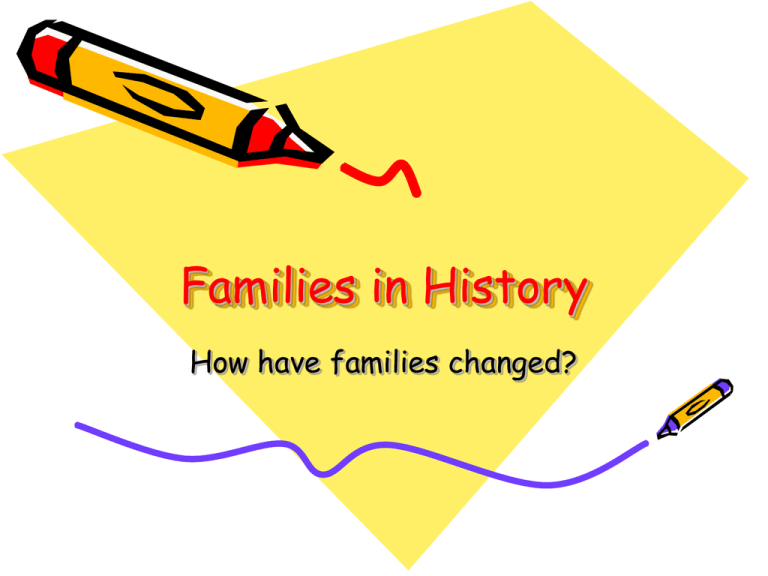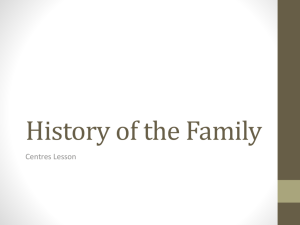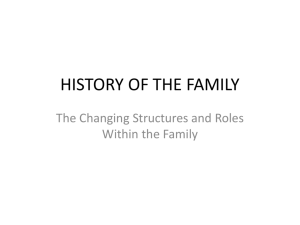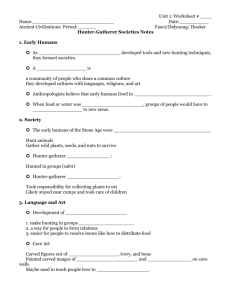Families in History
advertisement

Families in History How have families changed? Hunter-Gatherer Families • Men were hunters and tool makers – left for days to capture large animals • Women were responsible for gathering fruits, nuts, grains & herbs, as well as nurturing young children Hunter-Gatherer Families • Women were critical to family – supplied 2/3 of or more of calories consumed • Both men and women had high status within family • Families were originally loosely formed, then relationship between one man and woman became the norm Agricultural Families • 11 000 years ago • Domesticated animals and grew plants, so families were able to live in more permanent places • Due to need for help with labour, families became larger as people had more kids to help Agricultural Families • Children were considered economic asset • Families became highly organized • Monogomous relationship • Patriarchial family structure • (Define the above words on pg. 14) Pre-Industrial Families • Early Europeans who migrated to Canada came from society different form Canada’s agricultural one • Population increase meant families outgrew land • Families without land moved into cities and towns – became “tradesmen” Pre-Industrial Families • Families consisted of father (head), mother and children, plus any domestic servants and apprentices who were learning a trade from father • Families also most often lived with extended family Pre-Industrial Families • Romantic love was not the basis for marriage; married out of necessity • Child labour - less than 50% reached adulthood • Fewer children than agricultural families • Spousal abuse and child abuse Urban Industrial Families • Early 19th century • Shift towards factory production • Mother = sacred role, nurturer; supported by husband • Men = $ earner • Less need for children to work in factories • Compulsory education in 1871 Urban Industrial Families • Child labour outlawed in mide-1880’s • At this point, notion of childhood as “age of innocence” born • For many families, women still had to work in factories to earn enough money • By beginning of 20th century, only 5% of women worked outside home Urban Industrial Families • Couples began to have less children because they could not afford them Modern Consumer Family • • • • • 1940’s Women’s role – wife and mother Father’s role – breadwinner Adolescence emerged because of extended schooling • Birth rate rose post war (1946-1967) • Average of 4 children per family Contemporary Canadian Family • Significant changes in past 50 years • 60’s & 70’s – women re-entered workforce • Women’s rights • Divorce more common • Common-law • Blended families, dual income families Clips: • http://www.youtube.com/watch?v=ao gZUDx51vQ • http://www.youtube.com/watch?v=6K MOwBBT6iA











